2019 Sea-Doo RXP-X 300 vs. Yamaha GP1800R
How do two of the industry’s hottest performance craft match up?
The 2019 Sea-Doo RXP-X 300 and Yamaha GP1800R are arguably the two hottest performance craft currently on the market, offering not only that much sought after 65+ mph top speed, but also incredibly quick and aggressive handling. But while both offer the ultimate thrills for the truly hardcore performance junkie, they’re not just similar boats from their respective brands. Each has a very distinct personality all its own.
Here’s an insight into those unique personalities and how they ultimately compare.
Power
I’d argue that handling is probably the more important differentiator between these two craft, but power makes that handling possible so let’s start with the numbers.
Both craft feature their respective manufacturer’s most lethal engine. For Sea-Doo that’s the Rotax ACE 300, a 1,633cc three-cylinder engine paired with supercharger and external intercooler; for Yamaha, the 1,812cc Super Vortex High Output (SVHO) four-cylinder with supercharger and intercooler fits the bill. Sea-Doo hints at the horsepower in the RXP-X’s name, Yamaha no longer directly quotes horsepower, but to the consumer it doesn’t really matter. Both craft will easily reach 67 mph in good conditions with an average-size rider in the saddle, and both will stretch your arms upon takeoff, jumping at the first squeeze of the throttle. One tradeoff buyers will be forced to accept? With such power on tap, both manufacturers recommend a steady diet of premium unleaded fuel. Consider it the cost of premium power delivery.
As is kind of the norm from Sea-Doo, the 2019 Sea-Doo RXP-X 300 includes a few extras for that power delivery. Two modes determine just how hard that power hits. Touring mode tames the power curve and in the process tames the fuel consumption. It’s best for casual or long-distance riding when beat-your-buddy acceleration isn’t a requirement. Sport mode delivers up all of the engine’s stock potential and will be the likely setting for the vast majority of the time spent by this target audience. Sea-Doo also offers Launch Control, which can be selected by the user to automatically trim the bow down for best acceleration response and then trim it up once the craft approaches higher speeds.
Which craft actually accelerates the hardest? That can depend — a lot — on the rider and conditions but the 2019 Yamaha GP1800R likely holds the slim edge. Both craft, however, get off the line amazingly fast, and both require the rider be prepared with weight forward and feet and hands solidly anchored to handle the response.
Handling
So both are faster than fast, but how do they handle the power…and how do they just handle, period? This is perhaps the most significant difference between the two.
For starters, both boats can outmaneuver any other craft on the market when it comes to hard corners. They’re both two-seaters and just simply that aggressive. Turn the bars at speed and each craft responds with a vengeance, gripping the water with a tenacity that performance riders will love and less-experienced pilots will likely find themselves not quite prepared for. Riders of any skill level will want to ramp up the aggressiveness in their first few turns on each boat and get a feel for the craft’s response unless they want to be unceremoniously ejected from the saddle. These are race-ready machines and not intended for the casual enthusiast.
But while each can deliver a similar end result, their turning styles vary considerably en route. Both reward an inside lean, but the 2019 Yamaha GP1800R turns much flatter. As it’s also arguably the sharpest turning of the two models, the combination puts considerable strain on the upper body. A “sticky” vinyl on the saddle and a pronounced lower-back bolster anchor the rider in position but, as I’ve noted before, to truly push the craft a lot of riders are simply going to need to hit the weights. Upper body strength is definitely required as the hull corners like a slot car and the driver needs to be up to the challenge.
The 2019 Sea-Doo RXP-X 300 might give up a slight edge to the Yamaha in terms of sheer agility, but the RXP design transfers a good portion of that upper-body stress to the lower body by allowing the hull to lean substantially more and cradling the driver with the “Ergo Lock” saddle and footwells. The latter combination thins the saddle in hourglass fashion through the midsection to allow the rider to clamp their thighs around the seat and angles the legs outward to footwells that are inwardly canted where the foot meets the footwell surface. The design essentially gets the legs into the action, transferring much of the strain off the typically weaker upper body to the stronger leg muscles and allowing the rider to feel more “one” with the machine. The Sea-Doo RXP-X 300 also lets users adjust the rear sponsons to one of three positions to tailor the aggressiveness of the turns.

Each craft’s hull design also affects straight-line stability. That same two-stage hull design that allows the 2019 Sea-Doo RXP-X 300 to run on a smaller surface area at speed and lean so naturally into the turns can also make it feel the less stable of the two in straight-line speed runs. The hull can feel narrow and tippy, especially when encountering rougher water conditions. The 2019 Yamaha GP1800R won’t roll as naturally into the corners and definitely puts more strain on the upper body in those turns, but it feels more rock solid in straight drag-type runs as more surface area is in contact with the water.
As always, a test ride should be the determining factor. Riders will likely strongly prefer the feel of one craft to the other. Either way, prepare to carve up the water like never before.
Details
As to features, individual reviews go into more detail than we will here, but standout features include Sea-Doo’s Intelligent Brake & Reverse (iBR) and Yamaha’s RiDE, both of which use electronic control of the reverse bucket to mimic forward, neutral and reverse “gears” during low-speed maneuvering and provide rapid deceleration at speed. Both craft also feature electric trim, a must on such powerfully accelerating craft, as well as theft-prevention systems (lanyard for Sea-Doo, remote for Yamaha). Beyond that, Sea-Doo does offer an additional ergonomic enhancement, a telescopic steering system that lets the driver raise or lower the handlebars to match size, reach, or riding goals.
Price? Those additional features — ErgoLock, Touring and Sport modes, Launch Control, adjustable steering — all likely contribute to the 2019 Sea-Doo RXP-X 300’s larger $15,300 price tag, a $1,100 premium over the 2019 Yamaha GP1800R. The RXP-X is also far more futuristic in style, the GPR more traditional in looks and color.
Again, however, the ultimate decision will likely always come down to handling. The Yamaha likely holds the slight edge in sheer responsiveness and acceleration, the Sea-Doo the edge in making the rider feel one with the craft rather than have to exert their power over it.
Which trait matters to you most?
Get PersonalWatercraft.com in your Inbox!
Like PersonalWatercraft.com on Facebook
Comments
Most Popular

2025 Yamaha JetBlaster PRO 2-Up Review

Remembering the Sea-Doo XP

2024 Kawasaki Jet Ski STX 160X Review

Whatever Happened to the Wetbike?

2025 Yamaha JetBlaster Review

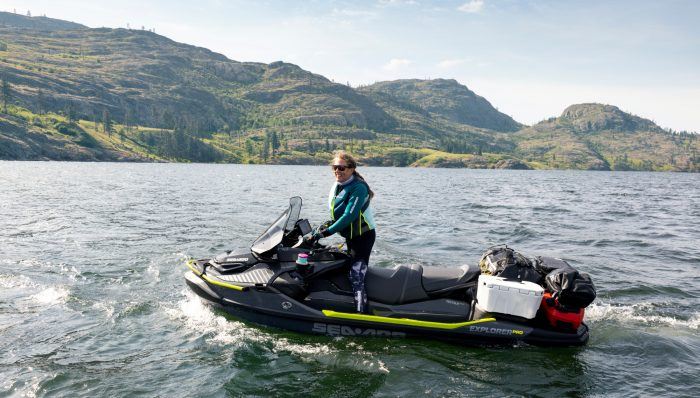
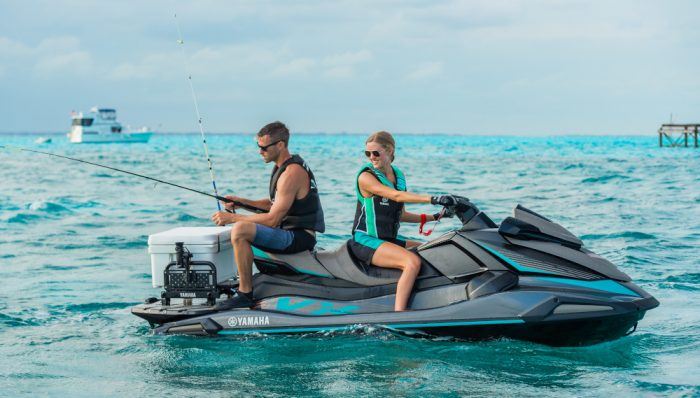
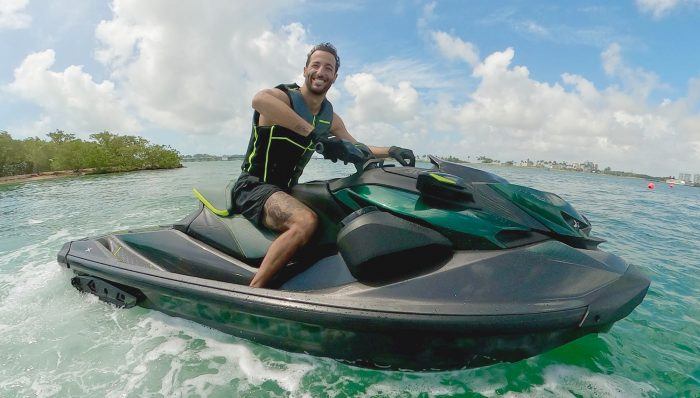


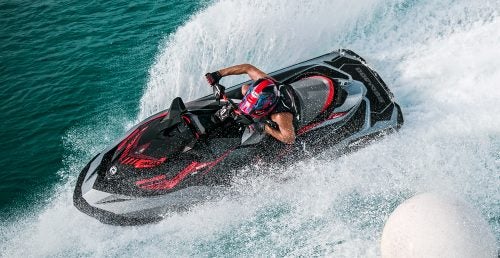

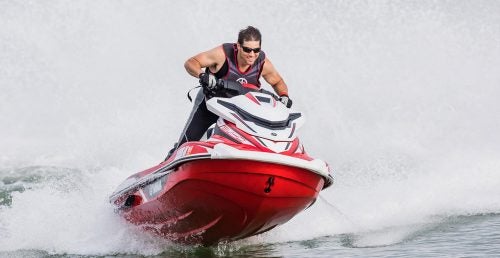


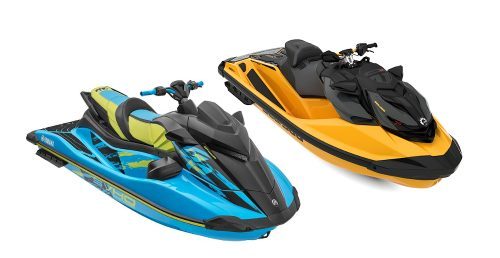
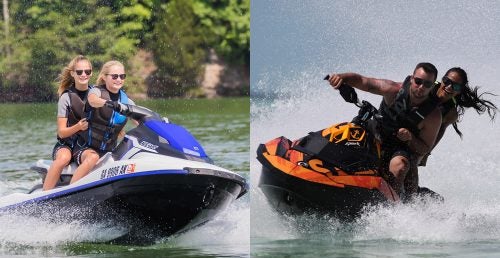
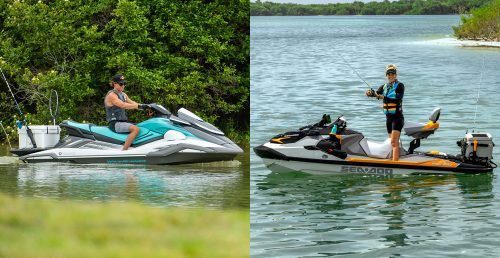


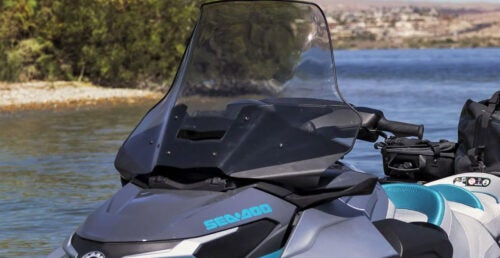
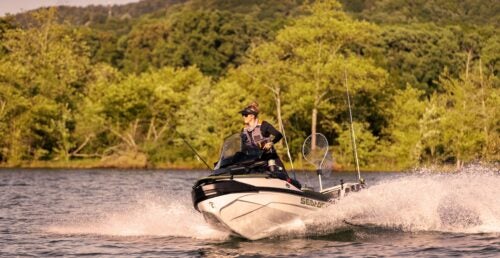


 Your Privacy Choices
Your Privacy Choices